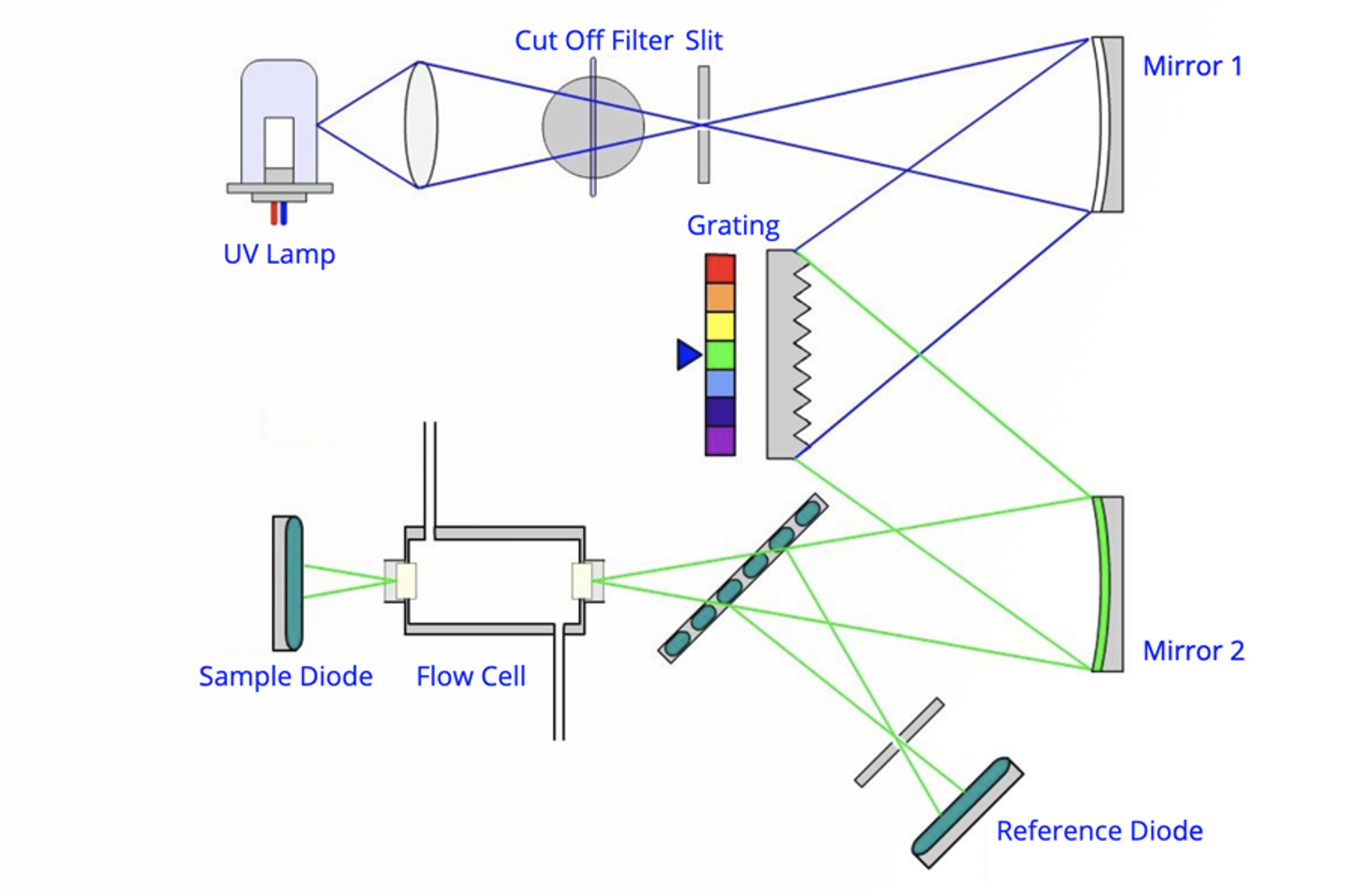HPLC Detectors
The aim of this module is to describe the purpose and general operating principles of detectors for HPLC. The general terms and concepts by which detector operation and performance are outlined. Specific operating principles of a range detectors for HPLC are covered, including UV-visible, refractive index, and fluorescence detectors. The advantages and functionality associated with diode array UV-visible detection is discussed, as well as the basic nature of quantitative analysis by HPLC. Instrument calibration is also outlined. We will highlight the advantages and disadvantages of each detector type and indicate the circumstances under which different detectors might be used.
At the end of this module you will be able to describe the function of the detector in HPLC, recognize and use the terms which are used to describe and measure detector performance, demonstrate an understanding of the operating principles of the most popular detectors used for HPLC, recognize when a diode array detector will bring benefits to the analysis, understand the settings used to optimize diode array detection, describe the general principles behind instrument calibration and the role of HPLC detectors in quantitative analysis, recognize the advantages and disadvantages of each detector type, and choose the appropriate detector for a variety of analytical applications.
Topics include:
- Detectors for HPLC - introduction
- General terms and concepts
- Limit of detection/quantification (LOD/LOQ)
- UV-visible detectors - the flow cell
- UV-visible detection - quantitation
- External standard quantitation
- Calibration curve
- UV-visible detectors - UV absorbance
- Variable wavelength UV-visible detectors
- UV detectors - diode array detectors
- UV detectors - DAD spectra
- Diode array detectors
- Diode array detectors - bandwidth
- Diode array detectors - slit width
- Diode array detectors - response time
- Diode array detectors - reference wavelength
- Choosing sample and reference settings
- DAD - peak suppression
- Fluorescence detectors principles
- Fluorescence detectors - excitation and emission
- Refractive index detectors - principles
- Refractive index detectors - instrumentation
- Charged aerosol detector (CAD) - principles
- Charged aerosol detector (CAD) - mobile phase optimization
- Charged aerosol detector (CAD) - detector optimization
- Evaporative light scattering detectors (ELSD) - principles
- Evaporative light scattering detectors (ELSD) - response
- Evaporative light scattering detectors (ELSD) - mobile phase optimization
- Evaporative light scattering detectors (ELSD) - detector optimization

